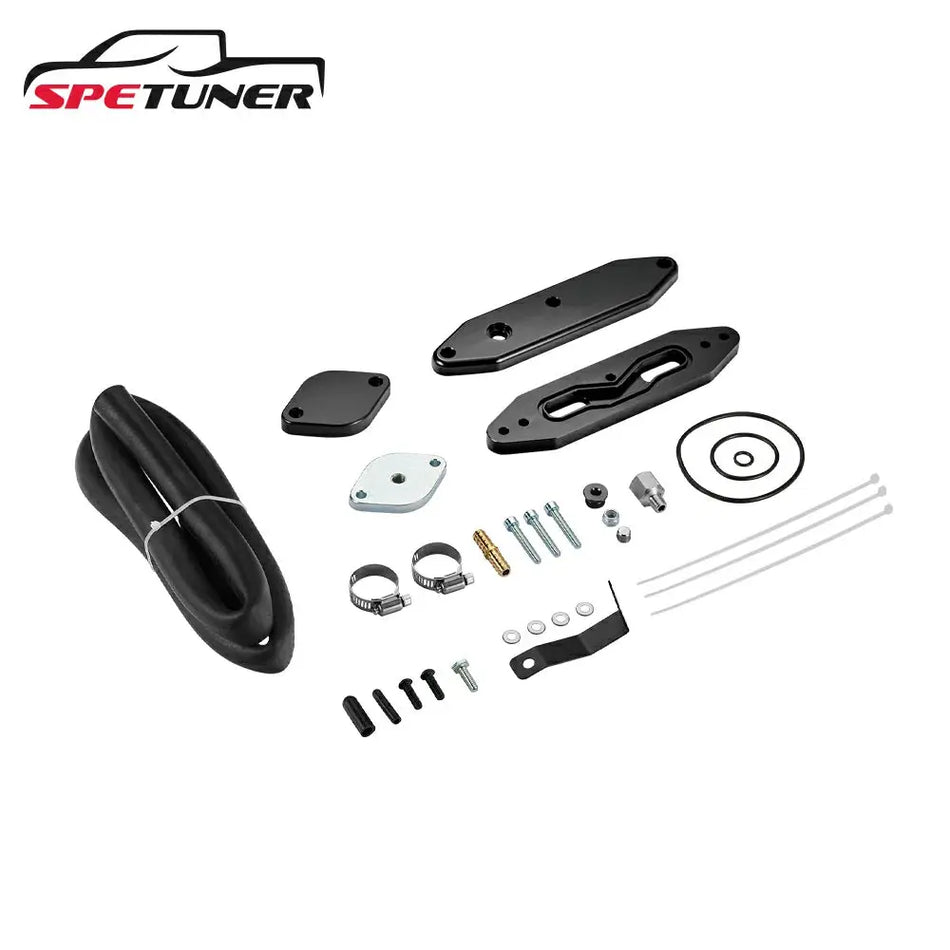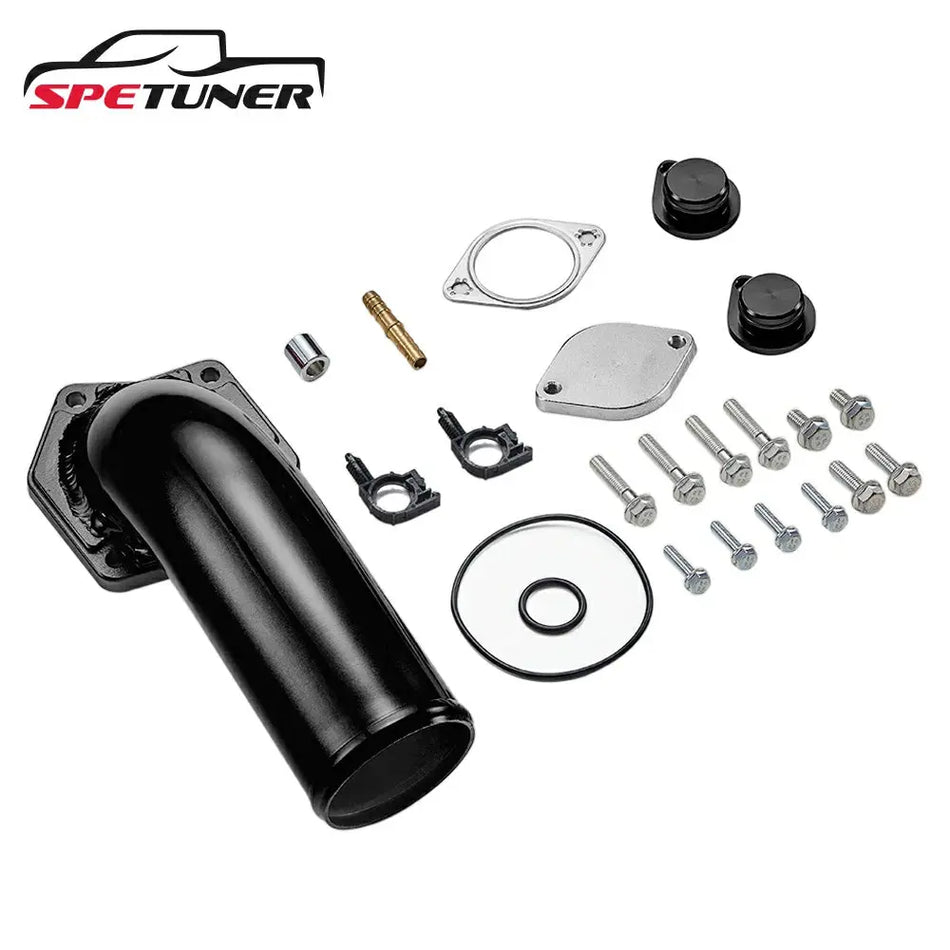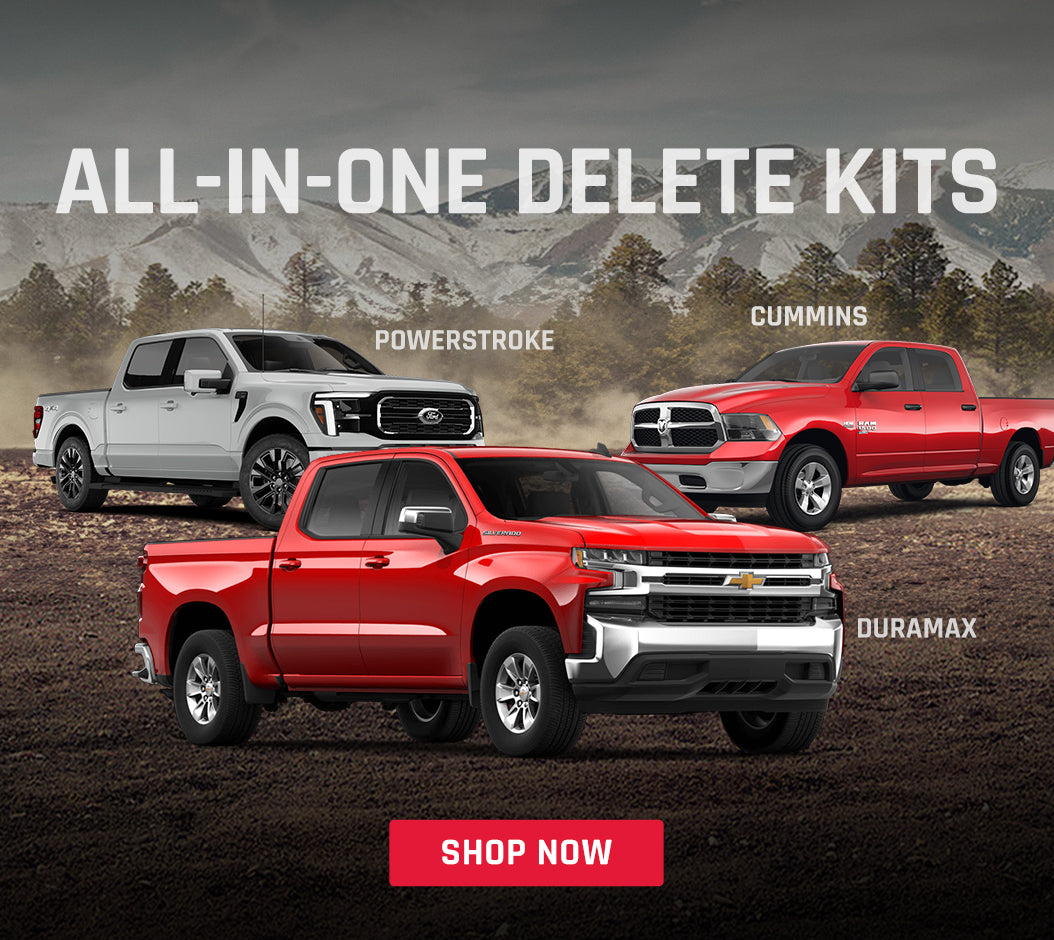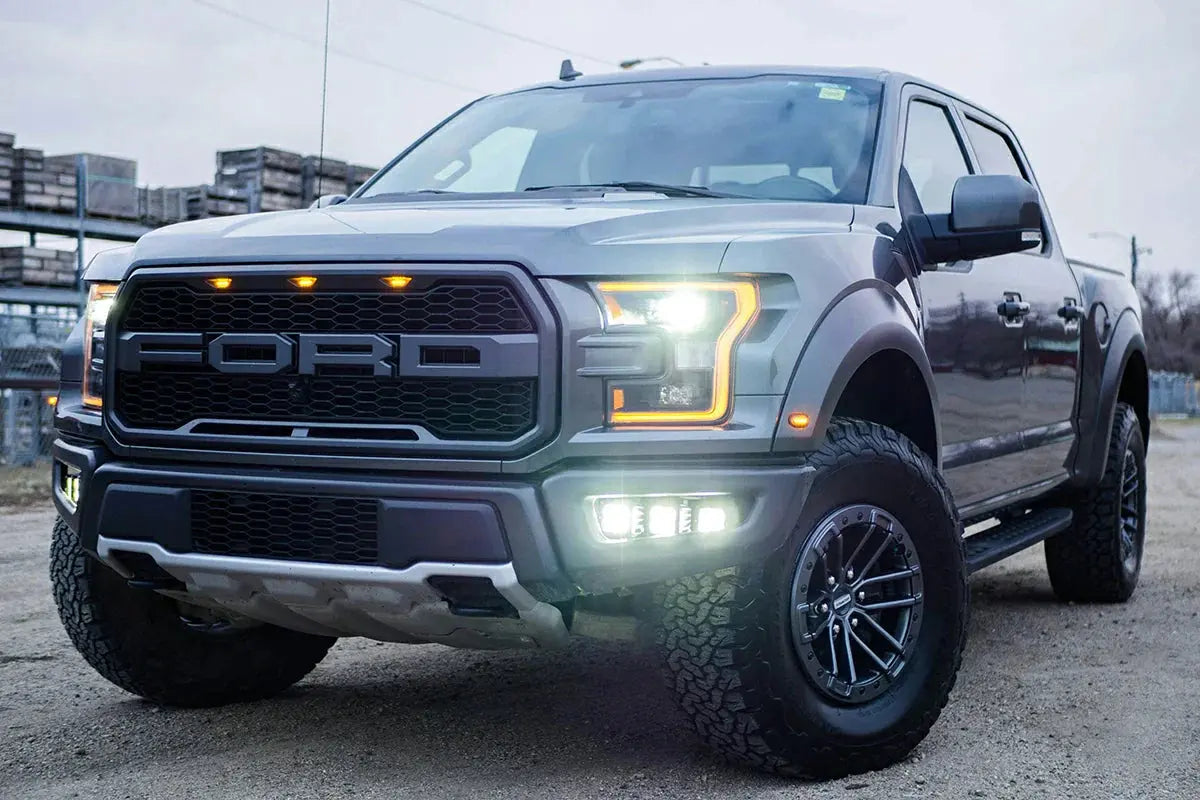Why Upgrading Your Truck’s Exhaust System Actually Matters
Upgrading your truck’s exhaust system isn’t just about making it sound louder — though that’s a nice bonus for a lot of us. It’s about unlocking your truck’s full potential.
A good exhaust system improves engine efficiency, reduces back pressure, and helps your engine breathe. The better your engine breathes, the better it performs — simple as that.
Whether you're pulling a trailer, off-roading, or just daily driving, a proper exhaust setup can boost your horsepower, torque, and even fuel economy. Not to mention, it helps manage heat better, which is a big deal for turbo diesel engines.
So if you’ve been feeling like your truck’s lagging or you’re just chasing a better sound and stronger throttle response, the exhaust is a smart place to start.
Performance, sound, and durability — that’s the exhaust trifecta.
Exhaust Materials Explained: Which One Should You Choose?
Choosing the right exhaust material isn’t just about price — it’s about durability, climate, and how long you plan to keep your truck. Let’s break down the three most common materials you'll see in aftermarket truck exhaust systems.
Mild Steel: Cheap, But at a Cost
Mild steel is the go-to for factory exhausts and budget aftermarket kits. It’s easy to work with, bends easily, and keeps costs low.
But here’s the catch — it rusts fast. If you live somewhere with road salt or heavy moisture, expect surface rust in a year or two. Full-on corrosion can show up within 2–3 years, sometimes faster.
Sure, you can spray it with high-temp paint, but that only protects the outside. Inside the pipe? Still exposed to condensation and heat cycling.
Bottom line: If you’re on a budget and don’t mind replacing your exhaust down the road, mild steel might work. But don’t expect it to age gracefully.
Aluminized Steel: The Middle Ground
Aluminized steel is a solid upgrade from mild steel. It’s basically mild steel hot-dipped in aluminum, giving it a protective coating that resists rust — both inside and out.
It holds up much better in dry climates, with a 5–8 year lifespan. But there’s a downside: the coating can scratch off easily. Hit a rock or scrape a curb, and rust can start creeping in from that weak point.
If you're not ready to pay stainless prices but want something more reliable than mild steel, aluminized is a good compromise.
Stainless Steel: Long-Term Performance
Now we’re talking high-end. Stainless steel exhausts are built to last — especially 304 stainless, which contains more nickel and chromium and barely rusts, even after 15+ years.
There are two types worth noting:
- 409 Stainless Steel: More affordable, magnetic, and contains more iron. It’s tough and handles heat well but can show surface rust over time.
- 304 Stainless Steel: Higher nickel content, non-magnetic, and extremely corrosion-resistant. If you want to install it once and forget it, this is your metal.
Yes, stainless costs more up front — but you save money and hassle in the long run.
Quick Tip: The Magnet Test
Here’s a simple trick: grab a magnet.
If it sticks hard, it’s probably mild or 409 stainless.
If it barely sticks or not at all, you’re likely looking at 304 stainless.
That test can tell you more than some sellers will.

The Truth About Back Pressure: What It Really Means for Your Truck
There’s a lot of confusion around back pressure. You’ll hear people say, “You need a muffler to keep the right amount of back pressure,” — but let’s clear that up right now.
That’s not how it works.
Back Pressure Isn’t What You Think
Back pressure is the resistance your exhaust gases face as they leave the engine. Too much of it slows down exhaust flow and hurts performance. But here’s the twist — your engine naturally creates back pressure through the way exhaust pulses work.
Picture NASCAR. When one car tucks in behind another, it gets pulled along by the low-pressure pocket in front of it. Your exhaust system does something similar.
Every time a cylinder fires, it sends a burst (or “bubble”) of gas into the exhaust. At low RPMs, those bubbles are far apart. But as RPMs rise, they get closer together — creating a pulse effect that helps pull gases along more efficiently.
This is natural drafting — and it happens with or without a muffler.
Mufflers Don't Create Useful Back Pressure
A lot of people think installing a muffler “adds back pressure,” which is good for the engine. But what it actually does is restrict flow — slowing everything down. That’s not helpful.
Opening up your exhaust (removing restrictions) can make your system more efficient, especially at higher RPMs where those pulses really start stacking.
So, Do You Want Back Pressure? Not Really.
You don’t need back pressure — you need proper exhaust scavenging. That’s what really helps performance. Letting the exhaust pulses pull each other through the system improves airflow and keeps your powerband clean and responsive.
In short: free-flowing is the way to go.

Choosing the Right Headers: Shorty, Mid-Length, or Long Tube?
Headers aren’t just about sound — they’re critical to how your truck breathes. If you’re upgrading your exhaust system, choosing the right headers can make or break your build, especially when it comes to torque, horsepower, and engine bay fitment.
What’s Wrong with Stock Headers?
Most stock manifolds are made from cast iron. They’re cheap to produce and handle heat decently, but they choke your engine.
You’re basically taking four exhaust ports and forcing all that flow into a small chamber. The result? Poor scavenging, increased heat, and ugly rust over time.
Upgrading to a performance header opens up airflow and reduces restriction right from the engine block.
Shorty Headers: Great for Low-End Torque
Shorty headers are compact and ideal when space is tight — like on Jeeps or trucks with front axle or control arm clearance issues.
They’re designed for low-end torque, making them perfect if you’re running large tires or towing. You won’t get massive top-end gains, but for everyday drivability or off-road torque? They get the job done.
Mid-Length Headers: The Best of Both Worlds
Mid-length headers balance low-end torque and top-end horsepower. They’re a good fit if you want performance gains across the full RPM range, but don’t have room for long tubes.
Not every truck has room for these, though — so always check fitment based on your exact chassis and engine combo.
Long Tube Headers: High RPM Horsepower Kings
If you’re building a truck for performance — high revs, racing, or just showing off — long tube headers are where it’s at.
These headers extend farther down the engine bay, improving exhaust scavenging and creating a deeper, throatier tone. They shine at high RPM, and they look damn good doing it.
Just make sure you’ve got the clearance to run them. And if you do? You’ll feel the difference.
What Are Headers Made Of?
Most headers come with:
A flange (where it bolts to the engine) — often mild or aluminized steel
Primary tubes — these can be 409 or 304 stainless depending on brand/quality
A collector — where the pipes merge, ideally shaped for smooth flow
Pro tip: if your header is slightly magnetic, it’s probably 409 stainless. No magnetism? Likely 304 — and that’s a win for long-term durability.
Which One’s Right for You?
- Off-roading or towing? Go with shorty or mid-length.
- Street/track performance? Long tubes all the way.
- Limited space? Shorty may be your only option.
- Want that deep, aggressive sound? Long tubes deliver.
Types of Exhaust Systems: Which Setup Fits Your Build Best?
Not all exhaust systems are built the same — and choosing the right type depends on what you’re after: power, tone, style, or all of the above.
Let’s break down the most common setups so you can pick the one that matches your truck’s needs.
Turbo-Back Exhaust
A turbo-back system replaces everything from the turbocharger outlet to the tailpipe. It’s the most complete option and allows for maximum airflow and performance gains — especially on diesel trucks.
This setup is perfect if you want a full overhaul or you’re already doing other upgrades like a downpipe or tuning.
Important: Due to EPA regulations, turbo-back systems on diesel trucks must retain emissions equipment (like the DPF) to stay legal.
Cat-Back Exhaust
A cat-back system starts after the catalytic converter and replaces everything from there to the back of the truck. It’s a favorite for those wanting better sound and modest performance gains without touching emissions components.
If you live in an emissions-regulated area, this is usually your safest bet.
Axle-Back Exhaust
This system only replaces the section after the rear axle — usually just the muffler and tailpipe.
It’s a budget-friendly way to change your truck’s tone and refresh the look of your exhaust tips. No major performance changes here, but it's an easy bolt-on upgrade.
Muffler Delete / Axle Dump
Looking for aggressive tone or a cleaner visual setup? A muffler delete or axle dump might be your style.
Axle dumps cut the exhaust short, usually right after the axle, and turn it down under the truck. This keeps the tip hidden and gives a more raw, unfiltered sound.
Heads-up though — these setups can get loud and may not be street-legal in all areas.
True Dual vs Fake Dual
Not all dual exhausts are created equal:
Fake dual: One muffler, two tailpipes. All show, minimal flow difference.
True dual: Two separate pipes running from each side of the engine, with no merging. This setup offers real performance benefits and a throatier, balanced sound.
If you’re serious about flow and tone, true dual is the way to go.
Don’t Forget About Sound Levels
Brands like MBRP and Borla offer different “sound series” — from mild to aggressive — and often include sound clips online. It’s worth listening before you buy so you don’t end up with something too tame… or way too rowdy.
Understanding EPA Regulations: What’s Still Legal for Diesel Exhaust?
If you’re running a diesel truck in the U.S. or Canada, emissions compliance isn’t optional — it’s the law. And with the EPA cracking down harder than ever, it’s critical to understand what’s allowed and what will get you in trouble.
Delete Kits Are (Mostly) Off the Table
Not long ago, DPF deletes and EGR delete kits were everywhere. They were marketed as easy ways to gain power, improve MPG, and reduce regen cycles.
But those days are fading fast.
The Clean Air Act now strictly prohibits tampering with emissions systems — and that includes deleting your diesel particulate filter (DPF), catalytic converter, or exhaust gas recirculation (EGR) system.
Shops can’t sell or install delete kits legally. And yes — that also means you can be fined for running them on public roads.
What Are Your Legal Options?
Thankfully, not all hope is lost. There are still EPA-compliant turbo-back systems on the market — like those from Diamond Eye or MBRP — that are designed to work with your DPF and other emissions equipment still intact.
These systems upgrade everything after the turbo, but stop short of removing or disabling emissions components.
So you still get:
Better flow
Increased exhaust tone
Improved throttle response
Without risking a fine or failing emissions testing.
Focus on Flow, Not Deletion
Many newer systems improve performance not by deleting emissions parts, but by optimizing what’s around them.
For example:
Installing a larger downpipe from the turbo improves flow without touching the DPF.
Upgrading your DPF-back exhaust gives you better sound and less restriction on the clean side of the system.
It’s smarter, safer, and still delivers noticeable gains — especially when paired with proper tuning.
Bottom Line: Stay Legal and Still Gain Performance
It’s possible to build a substantial, great-sounding diesel truck without breaking emissions laws. Just make sure your parts are:
EPA-compliant
Designed to work with your truck’s emissions system
Installed by a professional who knows the current rules
Compliance means peace of mind — and better resale value, too.
FAQs
Q1: What’s the best material for a truck exhaust if I want it to last?
A: If you’re looking for long-term durability with the least maintenance, 304 stainless steel is your best bet. It resists corrosion, handles extreme heat well, and can last 15+ years, even in salty or wet climates.
Q2: Will a new exhaust system improve my truck’s performance?
A: Absolutely. A freer-flowing exhaust helps your engine breathe better, which improves horsepower, torque, and even fuel efficiency. You’ll notice quicker throttle response and possibly lower EGTs on diesel trucks.
Q3: Do I need to worry about back pressure when upgrading my exhaust?
A: Not really. Modern engines don’t rely on back pressure to perform. What matters more is exhaust scavenging — letting the gases exit smoothly and efficiently. Less restriction usually means better performance.
Q4: Are delete kits still legal in the U.S. or Canada?
A: No. DPF, EGR, and catalytic converter deletes are not street-legal under EPA regulations. Most shops won’t install them anymore, and running a deleted truck can lead to fines or failed inspections.
Q5: What’s the difference between a cat-back and a turbo-back exhaust system?
A: A cat-back replaces everything behind the catalytic converter — it's emissions-compliant and easy to install. A turbo-back replaces the entire system from the turbo down, offering more performance, but it must retain emissions equipment to be legal.
Q6: Which header should I go with — shorty, mid-length, or long tube?
A: It depends on your setup and goals:
- Shorty: Best for low-end torque and tight engine bays
- Mid-length: Balanced performance
- Long tube: Best for high-RPM horsepower and deep sound
Q7: Can I pass emissions tests with a performance exhaust system?
A: Yes — as long as your system retains emissions components like the DPF and cats. Look for EPA-compliant systems that are designed to improve flow without deleting anything critical.
Q8: What’s a true dual exhaust system and is it worth it?
A: An actual dual setup has two separate pipes from each side of the engine all the way to the rear. It improves flow and delivers a cleaner, more balanced sound. If your budget and space allow, it's a solid performance upgrade.
Q9: Will a louder exhaust always mean better performance?
A: Not necessarily. While a louder system may sound more aggressive, performance gains come from optimized flow and design, not just noise. Some setups are tuned for tone without sacrificing efficiency.
Q10: How do I know if an exhaust system fits my truck?
A: Always check by year, make, model, and engine type. Many brands like MBRP or Diamond Eye provide fitment tools on their websites. When in doubt, reach out to a performance parts specialist.










